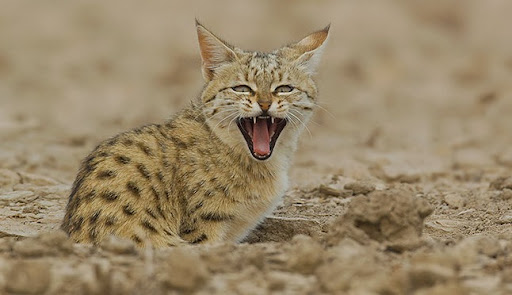Description

Copyright infringement is not intended
Context: An Indian Desert Cat has been spotted for the first time in Madhya Pradesh’s Panna Tiger Reserve (PTR)
About Indian Desert Cat:
- This cat is found in deserts and can survive without water.
- The toes of the species have cushion like hair which help it balance the fluctuating desert temperatures.
- The species is highly adaptable and can be found in forests as well as arid and semi-arid regions.
- It preys on small rodents and reptiles and is mostly a nocturnal creature.
- The reason why it may be found more abundantly in the deserts than jungles is the presence of Indian jungle cat in the latter habitat. The Indian jungle cat is a bigger and more dominant species in the forests.
- The species has a sandy-brown fur and small, round spots covering the upper part of its body.
- The cat has a long, slender and tapering tail with a black tip and spots at its base.
- The animal is in the ‘Least Concern’ category of the International Union for Conservation of Nature Red List of Threatened Species.
- Felis silvestris (Indian desert cat) has pug marks similar to that of wild cats.
About Panna Tiger Reserve
- Situated in the Vindhyan mountain range in the northern part of Madhya Pradesh, Panna Tiger Reserve is spread over the Panna and Chhatarpur districts.
- Flowing from the south to the north through the reserve is the River Ken. It is the lifeline of this reserve and is the least polluted of Yamuna’s tributaries.
- These forests along with Ken Gharial Sanctuary form a significant part of the catchment area of this river.
- The reserve is also dotted with two thousand year-old rock paintings.
- Panna Tiger Reserve (PTR) in Madhya Pradesh (MP) included in the global network of biosphere reserves by the United Nations Educational, Scientific and Cultural Organisation (UNESCO) as a critical tiger habitat.
https://www.downtoearth.org.in/news/wildlife-biodiversity/sighting-of-desert-cat-termed-rare-by-mp-is-not-rare-after-all-say-independent-wildlife-experts-80790





